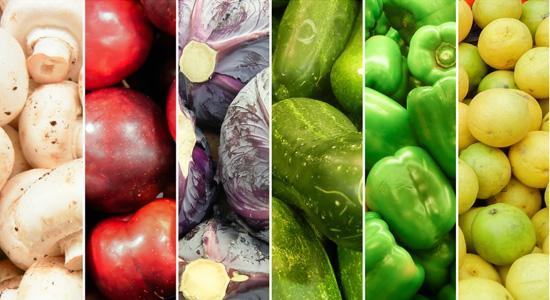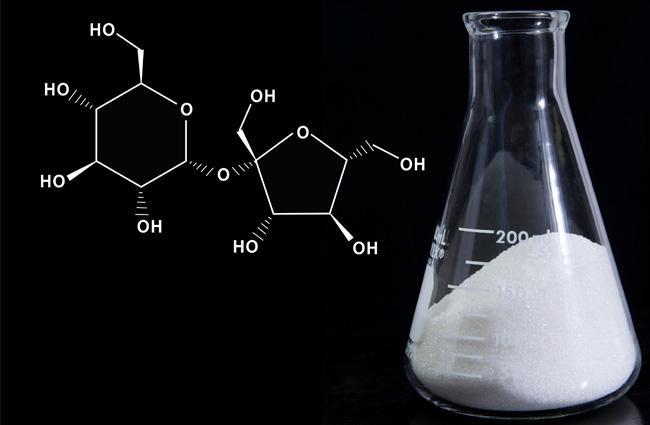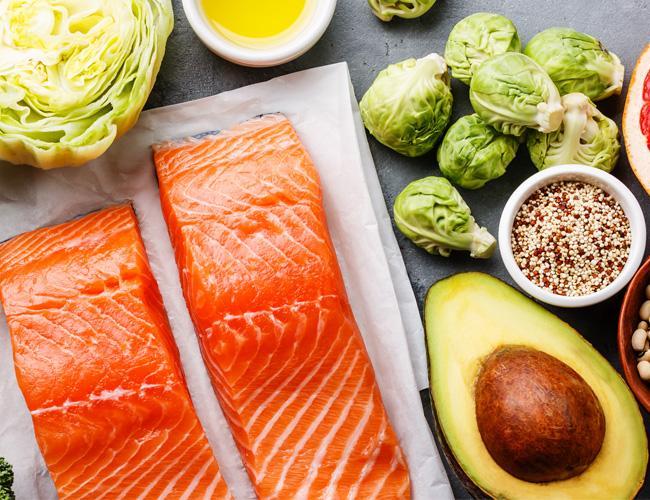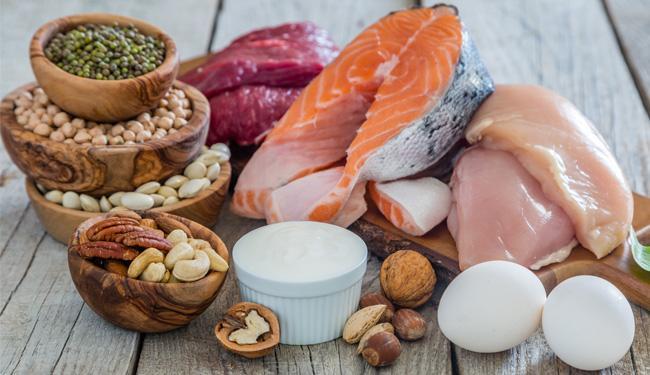Macronutrients (proteins, carbohydrates and fats) provide the energy it needs.
Micronutrients (vitamins and minerals) do not provide calories but are essential for the various enzymatic, metabolic and chemical reactions which take place in the body.
A healthy diet requires a balanced and consistent intake of carbohydrates, proteins and fats which is sufficient to cover the body’s expenditure of energy.

Fruit and vegetables are the core elements of a balanced diet
Vegetables should ideally be consumed with every meal, either raw or cooked.
Despite providing only a limited number of calories, they contain large quantities of micronutrients and fibre.
Fibre feeds the intestinal flora, helps to suppress appetite and slows down the absorption of fats and carbohydrates in the blood.

Carbohydrates (or sugars)
Carbohydrates can be divided into two categories: simple carbohydrates (sucrose (table sugar), fructose (fruit sugar), lactose (milk sugar), etc.) and complex carbohydrates (starch, cereals and legumes).
Carbohydrates provide our cells with a direct source of energy and are particularly important since they support all our everyday activities: our muscles and brain need sugars to function. However, when the intake of carbohydrates is excessive, the energy is stored as fats.
Indeed, excess dietary carbohydrates increase the glycaemia (i.e. the glucose levels in the blood). The body reacts to the increase by secreting insulin which promotes an increases in the utilisation of glucose by muscle cells (hence the importance of physical activity) but also promotes its storage in the form of fatty tissue.
Modern diets provide more carbohydrates than are needed to meet our energy requirements. Studies have particularly revealed that higher rates of obesity and cardiovascular disease correlate to diets high in processed foods, sugary drinks, refined cereals (white bread/pasta/rice), or pre-prepared meals enriched with glucose-fructose syrup, used to enhance the flavour of the food.
All carbohydrates do not, however, have the same ability to increase blood sugar levels and promote the storage of fats. The carbohydrates which must be avoided at all cost are said to have a “high glycaemic load”.

What is the glycaemic load of a food?
Carbohydrates may be categorised based on their glycaemic index. This figure indicates their ability to increase glycaemia (blood glucose level). The higher the glycaemic index of a food, the faster the rise in blood sugar level in response to consuming the food. Moreover, it induces the secretion of insulin, which in turn promotes the formation of fats.
However, the glycaemic index by itself does not fully reflect the impact of eating a specific food on blood glucose levels - the amount of food consumed is also important. Consequently, nutritionists now prefer to consider the glycaemic load of a food: this value reflects the rise in blood sugar level induced by a typical portion of this food.
By choosing carbohydrates whose glycaemic load is medium or low rather than high, an individual can reduce the glycaemic peak, and thus the release of insulin and the storage of fats.
Rye bread or wholegrain bread, al dente pasta, wholegrain rice and legumes have a lower glycaemic load than white bread, overcooked pasta, white rice or jam.
Fats (lipids)
For the body, fats are useful for storing energy (adipose tissue) and also play a structural role within cells. In this latter case, they are an important component of the cell membrane, notably providing membrane fluidity.
Fats are rich in calories and for many years were thought to be solely responsible for weight gain and cardiovascular disease.
However, studies have shown that a low-fat diet does not necessarily reduce the prevalence (the proportion of the population affected by the condition) of obesity or of cardiovascular disease. The explanation for this is that there are different types of fat.
There are “good” fats (notably omega-3 fatty acids which lower inflammation and protect the heart and brain) and “bad” fats such as saturated fatty acids (saturates) which, in large quantities, increase the risk of cardiovascular problems.
A balanced diet must provide sufficient good fats, particularly those present in certain vegetable oils (olive, rapeseed, linseed, camelina, etc.) or in oily fish.

Proteins
Proteins are the body’s “building blocks”. They provide the structure for all tissues: bone, muscle, connective and supporting tissue, internal organs, etc. They constitute the dense portion of the “lean body mass” to which is added the total body water.
Proteins also play a role in the body’s immune response and in the manufacture of neurotransmitters.
They also suppress appetite: helping to stave off hunger.
Finally, they can lower the glycaemic load of other foods.

Sources :
- Eve Villemur (2018) Maigrir grâce à mes 3 cerveaux. Published by Leduc.s
- Website of the French Agency for Food, Environmental and Occupational Health & Safety products: https://www.anses.fr/en/content/proteins
- Course material: Métabolisme protéique, Collège des enseignants de nutrition 2010-2011.

